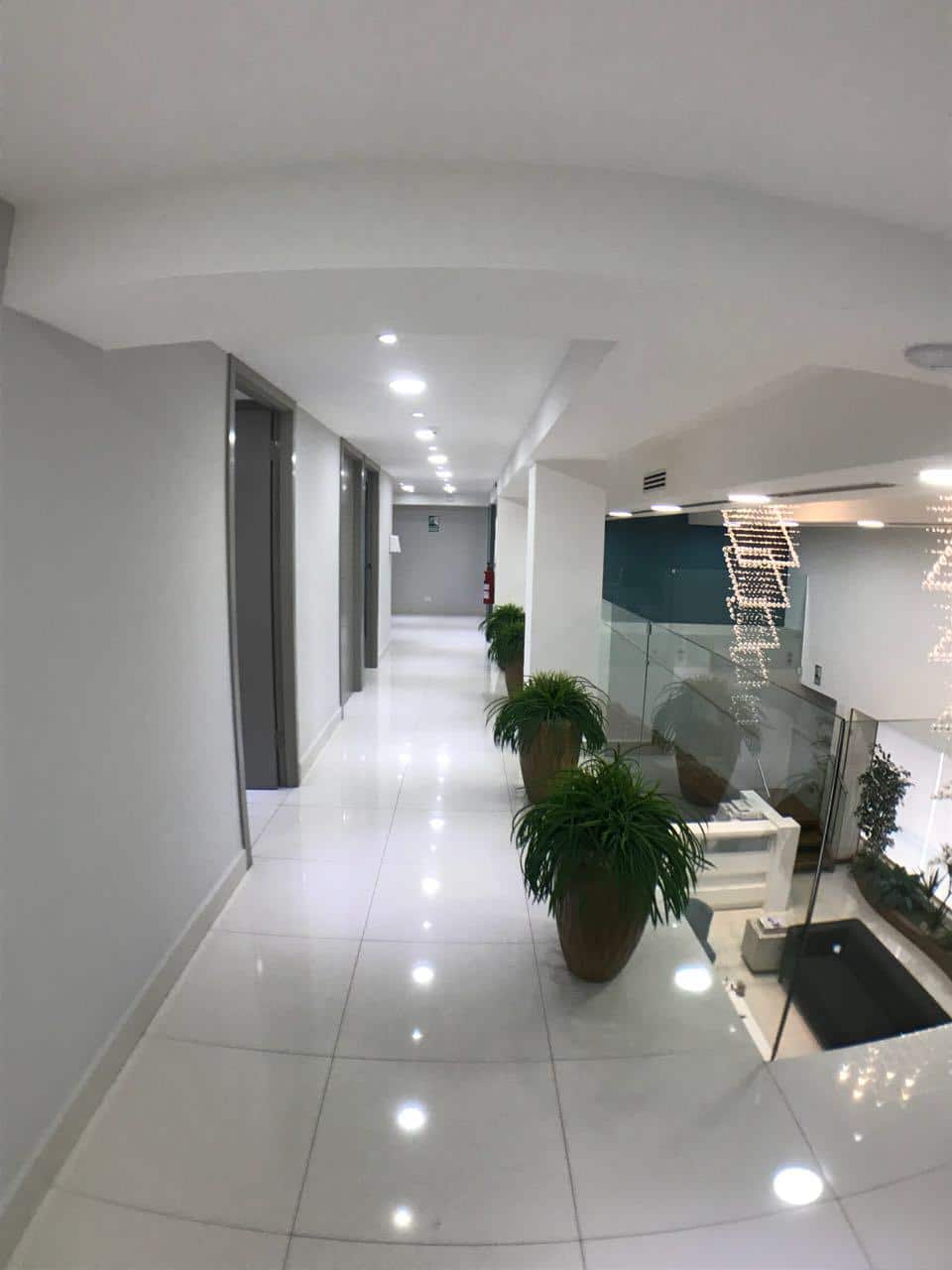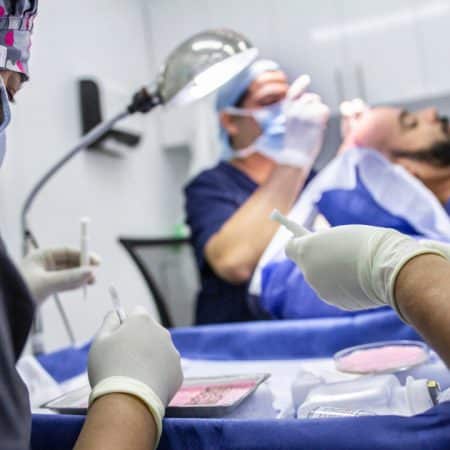Panama Hair Transplant Prices: Save Money, Get Results
A good hair day can do wonders for your mood and confidence. Studies have shown that feeling good about your hair can positively impact your mental and emotional well-being. Moreover, healthy hair is often a reflection of overall health.
Our hair serves as a remarkable defense system, protecting us from a host of environmental threats. Your scalp’s hair acts like a natural sunscreen, shielding your skin from the sun’s harmful UV rays. The tiny hairs lining your nose and ears work tirelessly as bodyguards, filtering out dust, dirt, and pesky insects. Even your eyebrows and eyelashes play a crucial role in safeguarding your eyes from irritating particles and excessive light. Beyond your head, body hair offers an additional layer of protection, shielding your skin from allergens, moisture, and minor injuries.
Your hair isn’t just a style statement; it’s a natural insulator that helps regulate your body temperature. When the weather turns chilly, your hair traps heat close to your scalp, acting as a cozy barrier against the cold.
Your hair is more than just strands on your head; it’s a powerful canvas for self-expression. From bold cuts to vibrant colors, your hairstyle uniquely showcases your personality and individuality.
Feeling good about your hair can improve your self-esteem and overall well-being.
A stylish haircut or a healthy, shiny mane can boost your confidence and positively impact your mental and emotional health. Amazingly, something as simple as great hair can contribute to a strong sense of identity.
Hair has been more than just a physical attribute; it’s been a powerful symbol throughout history.
From ancient to modern times, hair has conveyed status, power, and cultural identity. Biblical tales speak of Samson’s legendary strength, said to be intertwined with his long locks. In ancient Egypt, elaborate wigs were worn by pharaohs as a mark of royalty and divine authority. Hair has truly left its mark on the pages of history.
Panama: A Vibrant Tapestry of Cultures
Panama’s rich cultural fabric is a stunning masterpiece woven from African, Indigenous American, North American, and Spanish heritage threads. This captivating blend is evident in everything from the country’s traditional arts and crafts to its music, religious practices, sports, and delectable cuisine.
The following are some facets of Panamanian culture:
- Native American groups: Seven prosperous Indigenous communities, including the Guna and Emberá, are found in Panama. The nation’s slang and customs still reflect aspects of its culture.
- Culture of the Congo: In locations like Portobelo, tourists may learn about Congolese culture, which includes the “Congo Queen” dance and vibrant Caribbean attire.
- Traditional dress: While males wear a traditional montuno, which consists of a white cotton shirt with embroidery and short pants, women wear polleras, long, full dresses embellished with bright embroidery.
- Family: Panamanian families value family highly, yet they do not typically have meals at the table as part of their cultural tradition. Festivals Every Panamanian region has a distinctive festival with music and dance, in which the entire community participates in task sharing, preparation, and celebration of the successful outcome.
- Dining manners: top-tier Because Panamanians are so polite, you should expect to be pampered. Assistance should always be offered, but they will be graciously declined in formal families. You’ll probably be served first, so after a few minutes, you should say how good the food is and thank your host for a beautiful lunch before you head off.
Hair loss in men and women
Men
Typically, hair loss begins above the temples and progresses backward, forming an “M” shape at the hairline. Hair also thins at the crown of the head, eventually resulting in baldness. Men may begin experiencing hair loss in their teens or early 20s.
Women
Usually, hair loss begins with thinning at the portion line and progresses from there. Overall, the front hairline is generally untouched by a typical recession. In hair transplant in Panama, complete baldness is rarely a result of hair loss through hair transplants.
Other types of hair loss include involutional alopecia, a natural condition that causes hair to gradually thin with age, and hair loss after coloring, perming, or relaxing hair.
To categorize hair loss into phases, using the Hamilton-Norwood scale for male pattern and female pattern hair loss:
Men
Stage 1: Minimal or nonexistent receding hairline or hair loss
Stage 2: A small amount of temple recession
Stage 3: The hairline may have an “M” or “U” shape and deep recession around the temples.
Stage 4: Extremely extensive recession of the hairline and crown hair loss
Stage 5: The bald area on the crown is connected to the hairline regression.
Stage 6: There is less or no hair between the crown and the temples.
Women
Phase1: Minimal or absent hair loss
Stage 2: The middle section of the hair shows a little gap.
Stage 3: Hair loss on both sides of the part line and a more significant gap in the middle of the hair part
Stage 4: The front of the hairline begins to show bald areas.
Type I: Minimal thinning that hairstyling methods can conceal
Type II: Visible broadening of the mid-line portion and decreased volume
Type III: Diffuse thinning on top of the scalp that seems see-through
Hair loss treatments available in the Panamanian market
The Diagnostic System for Alopecia is known as DSA. With DSA, we have created the most extensive diagnostic framework. Hair loss can occur in various ways and be brought on by multiple variables, such as nutrition, psychology, environment, and heredity. DSA considers all these factors to provide a thorough treatment strategy for every patient.
The actions of the UDSA
Step 1: Examination of the Skin and Medicines
A thorough dermatological examination is performed on the scalp. The patient’s medical history is examined to rule out dermatopathy or other diseases that might make transplantation or other types of therapy more complex. Each patient’s specific kind of alopecia is also determined.
Step 2: Assess for hair loss
Here, in the zone where thinning is visible, we employ the latest analytical methods. We can assess how much hair is available for export throughout a person’s life and comprehensively grasp the problem’s extent.
Step 3: Check for Proteins in the Hair
Our overall health and, by extension, the health of our hair are directly influenced by our age, environment, and lifestyle decisions, such as what we eat. This exam evaluates the influence of these factors and guides our advice for preventive treatment.
We created this test with DHI Global Medical Group and the Institute of Biology, Pharmaceutical Chemistry, and Biotechnology at the National Research Foundation.
Step 4: Evaluation of Stress
In a vicious cycle, stress can lead to hair loss and further stress. To ensure that anxiety and depression are adequately treated with the appropriate form of therapy, each patient undergoes a psychological evaluation. This examination was created with a group of University of Athens psychologists.
What is a hair transplant procedure, and what is its importance?
There are many hair transplant techniques accessible in Panama, but the DHI Direct Hair Implantation technique is the most cutting-edge and is only offered at the esteemed and authorized hair transplant in Panama. It gives you a feeling of luxury and uniqueness at Calle 56 Punta Paitilla, Plaza G&G, local 2, Panamá.




What is the DHITM Hair Transplant Procedure?
DIRECT HAIR IMPLANTATION (DHITM) – DHITM is a unique hair transplant procedure that can only be performed by:
1. DHI Technique
2. DHI certified doctors
3. DHI protocols
4. DHI’s patented instruments
5. At DHITM authorized clinics
No pain, no scars, no downtime. The perfect natural result every single time.
3 step procedure
Step 1: extraction phase
Individual hair follicles are extracted from the donor location one by one using a carefully manufactured disposable device with a diameter of no more than 1 mm. After being implanted, the follicles are kept in a solution that encourages growth at a specific temperature without splitting, cutting, or changing the grafts in any other way.
Step 2: the placement stage
Without the need to make any holes or slits beforehand, hair follicles are directly placed into the region undergoing hair loss using a patented tool known as the DHI Implanter, which also has a diameter of 1 mm or less.
Step 3: Natural Result
Total control over the placement of each graft—including depth, angle, and direction—ensures maximal survival, 100% natural results, lifetime growth, and the preservation of implanted hair.
Why choose a hair transplant treatment at the DHI clinic?
DHI technique and its benefits are propriety to DHI Medical Group. Some clinics and doctors try to copy this and claim to use the DHI technique, which is misleading. The following features are only available at DHI-authorised clinics.
1) We are proud to be ranked #1 on customer satisfaction in a hair transplant industry survey by IMRB. Our customer satisfaction rate is more than 99%. Also, they received the Customer Excellence Award from Quantic and numerous other awards & accreditations from medical bodies worldwide.
2) Our results are not just good; they are fantastic! Click LINK to see our results and LINK to get our customer feedback.
3) We provide hair restoration services for men and women with all stages of hair loss. This includes high growth factor PRP/GFC therapies and Activa Regenera treatment for early-stage alopecia, hair transplants for all stages of alopecia, and the highest-quality natural human hair cosmetic patches for very advanced stages of alopecia. Our hair loss treatment products and nutraceuticals have the highest-grade active ingredients, and you can shop for them here.
4) All procedures are performed from start to finish by DHI doctors trained and certified by the London Hair Restoration Academy. The surgeons are focused on hair restoration procedures only. Every procedure undergoes strict quality control.
5) All procedures are performed per strict standard operating protocols accredited with the UK Care Quality Commission and ISO standards.
6) The world’s safest hair transplant procedure is performed in a sterile environment according to comprehensive safety protocols. All procedures are performed only after proper diagnosis and medical tests.
7) Our patented implanter allows Perfect control over angle, depth, and direction. Only the highest-quality imported instruments are used and discarded after every procedure.
8) One-step implantation to ensure minimal graft handling. The highest graft survival rate is over 90%, compared to 50-90% in other clinics.
9) There are no stitches, pain, scarring, or downtime. You can return to work the next day. It is just a short procedure to regrow your hair naturally and permanently. Daily Mail UK titled DHI the “Lunch Hour Transplant” (click here to read the article).
10) Achieve strong density in a session compared to other low-density techniques such as FUE and FUT.
11) Natural Results Guaranteed – The DHITM technique gives you a perfectly natural result; others will only know you had a transplant if you tell them.
12) DHI is the world’s largest hair restoration medical group from Greece. For more than 50 years, we have focused on research, innovation, and education in hair restoration. We have 75 clinics in 45 countries serving more than 5,00,000 satisfied customers. Top celebrities from the entertainment, sports, business, and politics only trust DHI for their hair restoration.
Cost of DHI Hair Transplant
When assessing your options, one of the most important things to consider is the cost of a hair transplant. The price of the procedure at DHI is unique to you and your hair loss treatment plan with the best hair transplant in Panama.
The hair transplant cost is mainly determined by the number of grafts required to provide a patient with the best results. Thus, giving an accurate price over the phone or online is impossible.
We encourage you to make an appointment at our local clinic for a comprehensive consultation with our professionals regarding your hair and scalp. After your visit, the doctor will be in a better position to determine the exact cost of the treatment.
7 Key questions you should ask before choosing your hair loss solution
1 Who will perform the procedure?
In most clinics, procedures are performed by technicians only. The clinic owners are plastic surgeons and dermatologists, mainly involved in sales and marketing. Their involvement in the actual procedure is very limited. You should go to a clinic where a doctor performs the entire procedure himself/herself, not through a technician.
It is also important to check if the clinic/doctor specializes in hair transplants or offers other aesthetic treatments, such as Botox. A better choice would be to go for a super specialist doctor.
2 Is your doctor suitably trained and certified? Do they follow standard and accredited protocols?
Doctors often learn about hair transplants from other doctors without any evaluation or certification process. It can take years for them to learn the intricacies of hair transplants. Further, most doctors do not follow written protocols and perform procedures based on personal preferences, leading to sub-optimal results.
Please check if the doctor performing the procedure has training and accreditation from a reputed institute. Very importantly, personally verify if the clinic has written protocols for all stages of the hair transplant procedure, including detailed safety protocols.
3 What is the experience of the clinic/doctor you are going to?
Hair transplants are a relatively new area of practice, which has lured many doctors to leave their practice in the field of their expertise and move towards hair transplants only in the last 3-5 years. Many clinics may not have the experience, protocols, or necessary expertise to handle hair transplant cases. Please ensure that the clinic has been established for many years and has a verifiable reputation. Do not just rely on what they claim.
4 How does the clinic ensure the quality of your results?
Research shows that, on average, only half of the implanted hair may grow in certain clinics without proper experience. The clinic may not have access to the latest techniques, instruments, tools, protocols, etc. Please avoid freelancers working in many clinics on a case-by-case basis. They will likely spoil your case as they may care least for the patient. Sometimes, the doctor may be very qualified or experienced but past his prime to be able to give good results.
Do check if someone supervises the work done by the doctor. Does the doctor follow any certification, assessment, and quality monitoring process?
It is not advised to go to a clinic where there is only one doctor whose work goes unsupervised.
Good results can only come with the right technique, instruments, tools, protocols, training, assessment, and quality control.
5 How do you ensure your safety during and after the hair transplant procedure?
Generally, hair transplants are safe and cannot lead to severe risks. However, sometimes scalp infections or even more severe conditions could occur if the correct safety protocols are not followed. This risk is very high when the procedure is performed by technicians or inexperienced doctors.
You are advised to ask relevant questions and follow the written safety protocols at the clinic.
Please see the procedure room and ask yourself if you feel confident about the safety protocols.
6 Would you go for a hair transplant without a proper evaluation of your alopecia?
The answer is obviously No. There are ten kinds of alopecia. The correct treatment cannot be recommended unless a proper diagnosis is carried out. Many clinics recommend hair transplants without making a proper diagnosis. They also may not conduct a mathematical count of the donor and recipient areas to assess the hair transplant requirement and feasibility correctly. Please invest time and effort during your diagnosis and evaluate the doctor on proper dermatological examination diagnosis, precise donor and recipient area hair count, and computerized alopecia test. This results in a comprehensive lifetime treatment plan and the best results for your hair loss problem.
7 Should price play a role in choosing a hair transplant clinic or doctor?
Yes, of course, price is indeed a very important criterion. But you should not choose a clinic or doctor purely on the cost. Many doctors can reduce their costs significantly by reusing the instruments, compromising on safety standards, using technicians to do the procedures, etc. Quality and Safety come at a price. This is your investment in your safety and great-looking results for life. So choose wisely.
Rediscover Your Confidence with a World-Class Hair Transplant in Panama!






